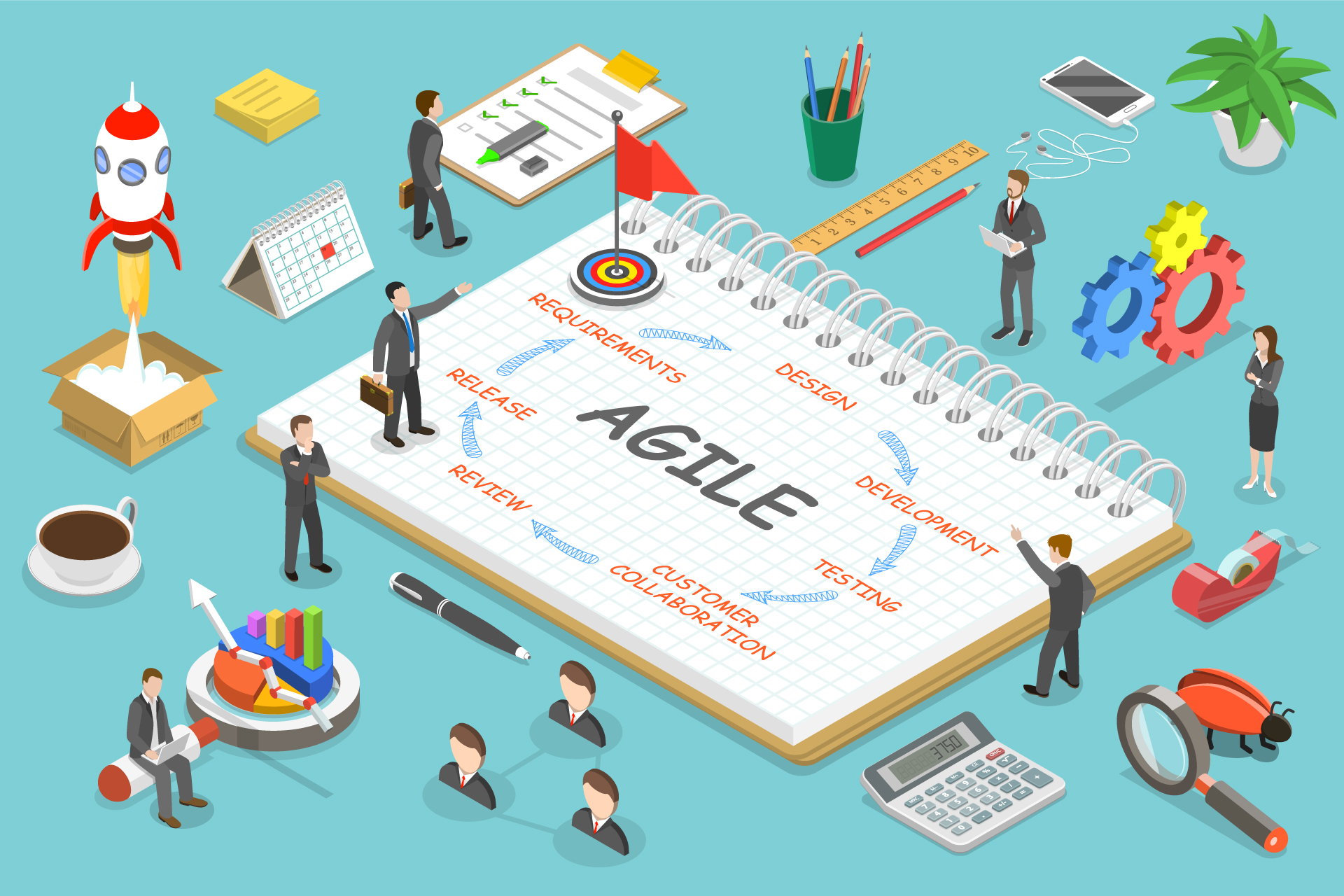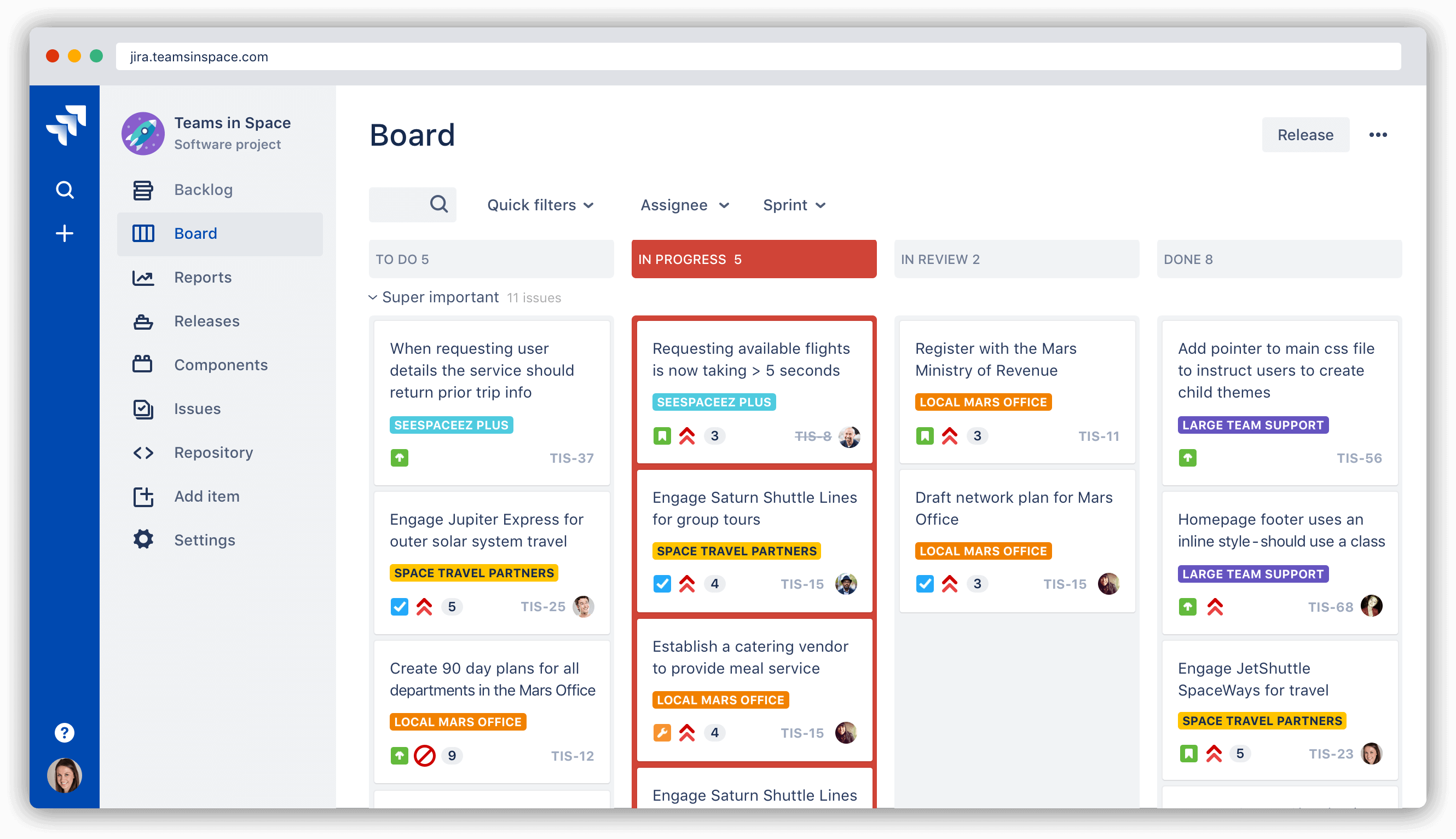In the evolving landscape of software development, project management methodologies are crucial in determining the efficiency, flexibility, and success of projects. As organizations strive to meet complex demands and delivery timelines, the choice of a methodology becomes paramount. This article explores software development methodologies, with a particular focus on Kanban, and evaluates its implementation at WebArc.

Introduction to Software Development Methodologies
Software development methodologies provide structured approaches to planning, executing, and managing projects. They offer frameworks that guide teams through the development process, from concept to delivery. Notable methodologies include Waterfall and Agile, with the latter encompassing specific implementations such as Scrum and Kanban, each having its own distinct characteristics and applications.
The Waterfall model, one of the earliest formal methodologies, follows a sequential approach. It divides projects into distinct phases, such as requirements gathering, design, implementation, testing, and maintenance. Each phase must be completed before the next begins, making it suitable for projects with well-defined, unchanging requirements. However, its rigidity can be a drawback in dynamic environments where requirements frequently change.
The Agile framework emerged as a response to the limitations of Waterfall, emphasizing flexibility, iterative development, and customer collaboration. Agile is not a single method but a collection of approaches that share common principles, such as adaptive planning, evolutionary development, and continuous improvement. It allows for faster delivery and better responsiveness to changing requirements.
Scrum, an implementation of Agile, has gained widespread adoption due to its structured yet flexible approach. It organizes work into fixed-length iterations called sprints, typically lasting two to four weeks. Scrum defines roles (Scrum Master, Product Owner, Development Team) and ceremonies (Sprint Planning, Daily Stand-ups, Sprint Review, and Retrospective) to facilitate project progress and team communication.
Kanban: Philosophy and Implementation
The core principle of visualization involves representing all work items on a Kanban board, typically divided into columns representing different stages of the workflow (e.g., To Do, In Progress, Review, Done). This visual representation provides immediate insight into the status of all tasks and helps identify bottlenecks or inefficiencies in the process.
Limiting work in progress is another key aspect of Kanban. By setting maximum limits on the number of items in each stage of the workflow, teams are encouraged to complete current tasks before starting new ones. This focus helps reduce context switching, improves quality, and can lead to faster overall delivery times.
One key feature of Kanban boards is Kanban swim lanes. Swim lanes are horizontal sections on a Kanban board that help teams categorize and organize work items. They allow for differentiation of project types, task urgency, or allocation by team or client, improving board clarity. By using swim lanes, teams enhance workload management, streamline task flow, and gain better visibility into their processes, ultimately increasing productivity and efficiency.

Implementing Kanban involves several basic steps:
- Map Your Workflow Define how tasks move from start to finish in your organization. List all stages work passes through (Design, Planning, Implementation, Testing) and identify key handoff or approval points.
- Visualize the Workflow Create a board showing your workflow stages as columns. Make cards for all work items and organize them into swim lanes based on work type or priority. Ensure every task has a clear path through the board.
- Improve Flow Watch how work moves between stages and identify bottlenecks. Address problems by adding resources, automating steps, or adjusting processes. Make one improvement at a time and measure its impact.
- Optimize Work in Progress (WIP) Set limits on how many tasks can be in each stage. Start with higher limits and gradually reduce them. Monitor how these limits affect team performance, work quality, and delivery speed. Adjust limits to find the right balance for your team’s capacity.
One of Kanban’s strengths is its adaptability to different team sizes and project types. Unlike more prescriptive methodologies, Kanban can be tailored to fit the specific needs of a project or team. For smaller teams or projects, a simple board with few columns might suffice, while larger, more complex projects might require multiple boards or swim lanes to represent different workstreams.
Examples of Kanban in Industry
To demonstrate the effectiveness of Kanban in real-world applications, consider the case study of Vanguard, a prominent investment management firm. Vanguard successfully adopted Kanban to enhance its software development processes, resulting in improved transparency, communication, and delivery times. By visualizing workflows and implementing work-in-progress limits, Vanguard’s teams managed project complexities more effectively and improved service delivery.
The outcomes were impressive: teams experienced a fourfold increase in delivery throughput, with lead times reduced to a quarter of their previous baseline. Approximately 40% of teams originally using Scrum either transitioned to Kanban or planned to do so, noting better flow metrics compared to some of Vanguard’s top-performing Scrum teams. This shift effectively addressed “Scrum stall,” which is characterized by unevenness and overburdening in knowledge work.

Vanguard’s success was largely due to their adoption of key Kanban practices, such as system context diagramming, upstream filtering, and explicit policy definition. Their empirical study, which assessed around 10% of their Agile teams and involved over 700 practitioners, showed that teams utilizing Kanban achieved significant improvements in system lead time and cumulative flow. These findings highlight how Kanban’s principles of continuous feedback and adaptability can lead to more efficient outcomes and better responsiveness to evolving business needs.
Is Kanban Right for Your Project?
Kanban can be a highly effective methodology, but its suitability depends on several key factors:
- Continuous Workflow Needs: Kanban is ideal for projects that benefit from an ongoing, steady flow of tasks rather than rigid phases. It works well in environments that require continuous delivery or where priorities shift frequently.
- Flexibility in Scope: If your project needs the flexibility to adapt to changing requirements without the pressure of strict deadlines, Kanban’s fluid structure can support evolving needs.
- Team Dynamics: Kanban works best with teams that have a strong sense of collaboration and self-management, as it empowers teams to pull tasks based on their capacity.
If your project requires flexibility, continuous delivery, and high visibility of progress, Kanban could be the right fit. However, if the project demands fixed milestones, strict timelines, or more formal planning stages, another methodology might be more appropriate.
Successful project delivery stems from selecting the methodology that best fits each unique situation. Aligning methodological choices with business objectives, technical requirements, and team dynamics creates a flexible, outcome-driven strategy that consistently delivers faster completion times, higher-quality results, and provides stakeholders with clear visibility into progress throughout the project lifecycle.
